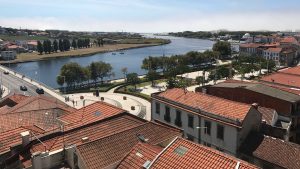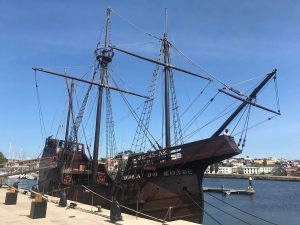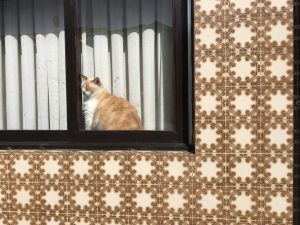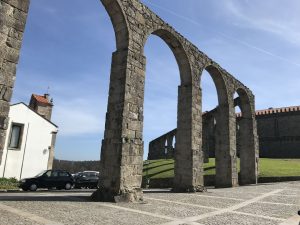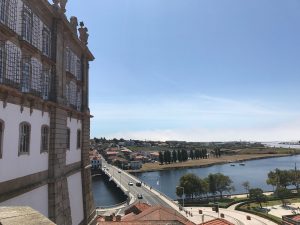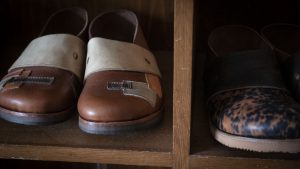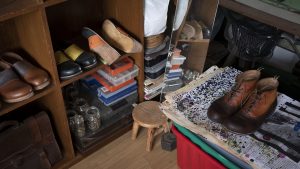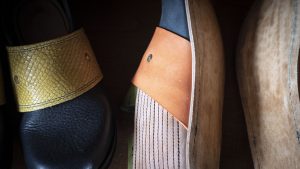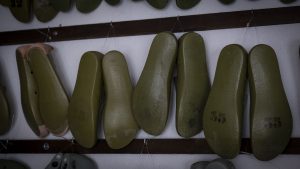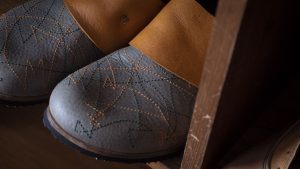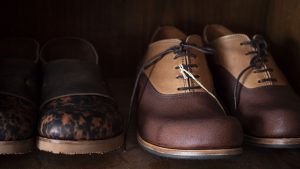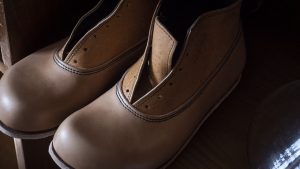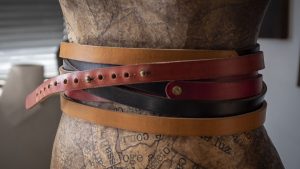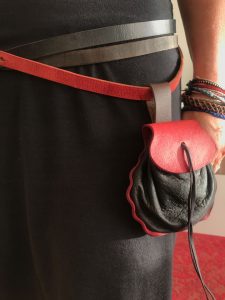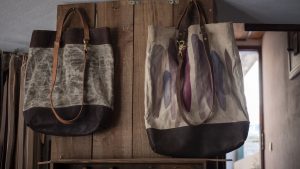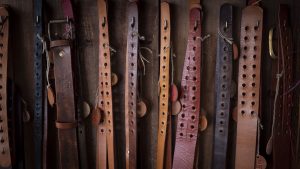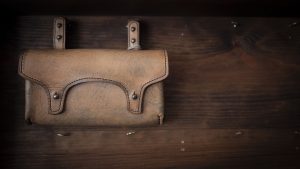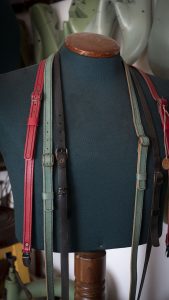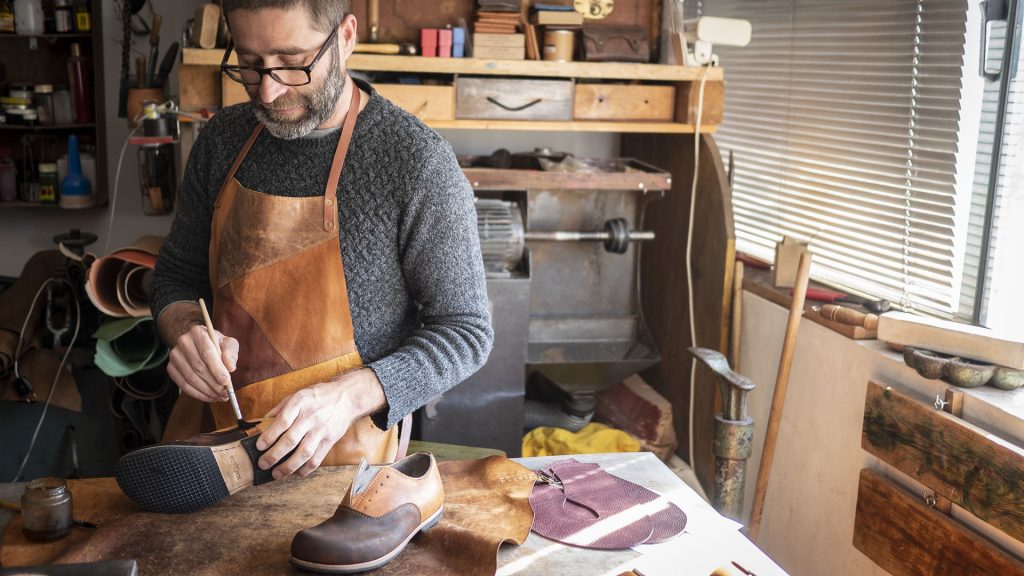
We met José Machado a couple of years ago when we were walking through the local artisans Porto
We loved and bought many of his designs and eventually became great friends and
(Click on pictures to enlarge)
José invited us several times to take the metro up to Vila do Conde where we had lunch and visited with him in his workshop.
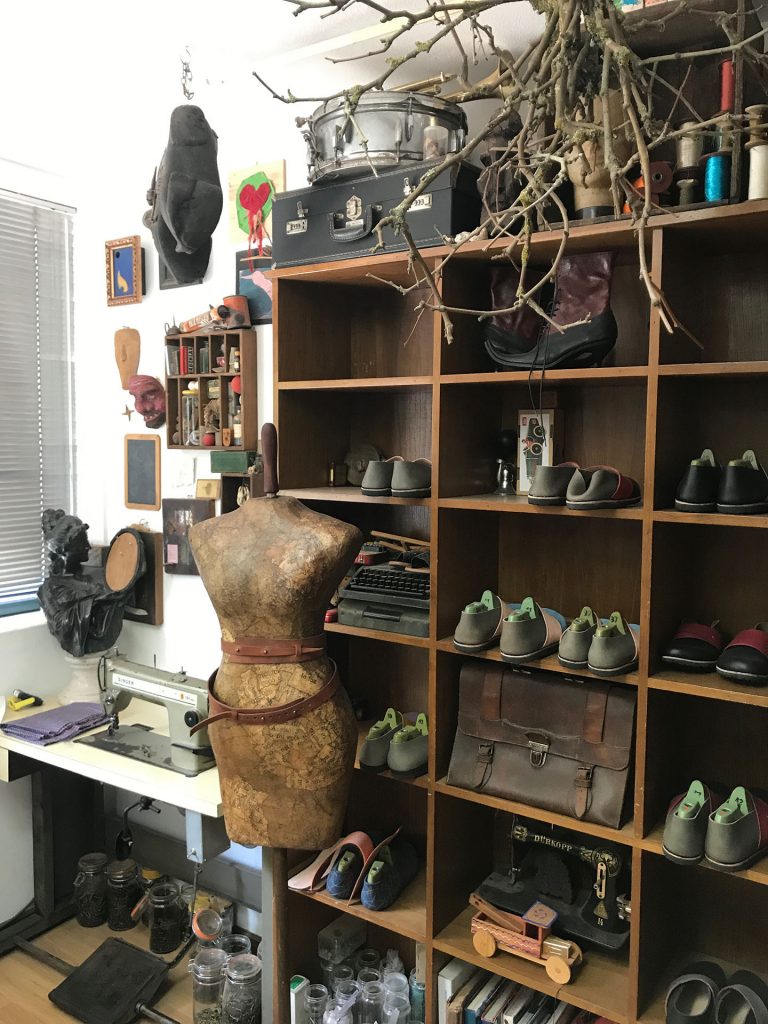
This interview was from the last time we visited with him.
Travel Artists Hub: What is your artistic focus?
José Machado: I like to create shoes, in an artistic way. When I say artistic way, I like to work with impulse to create something. Not just a repetition of something but to create something—this is different. I have to feel stimulation to create shoes. Because the form is important and the color is important. That is my focus—that is what I want to create.
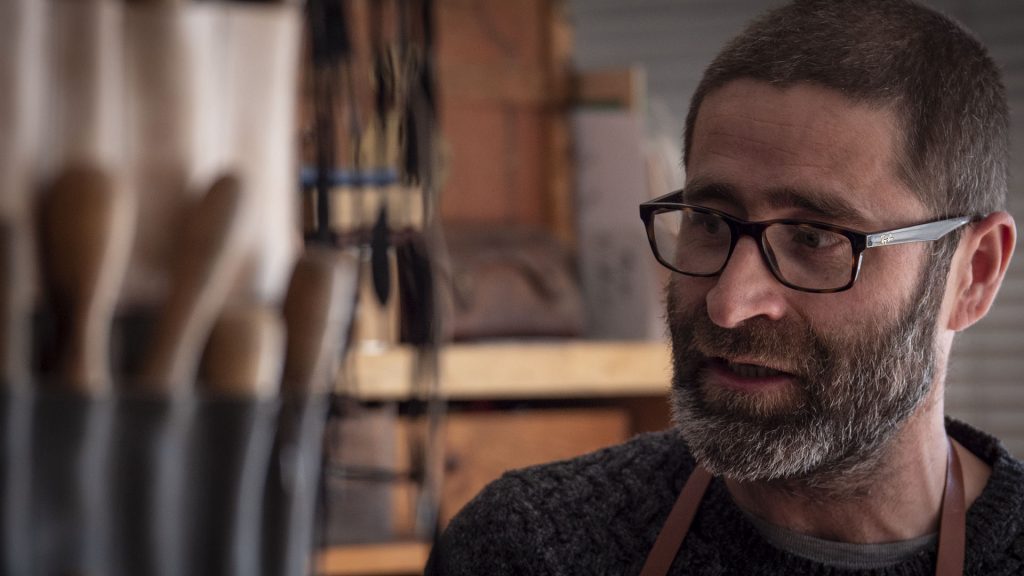
TAH: What gives you artistic stimulation?
JM: It depends, sometimes a flower, sometimes a bird. Sometimes it is just simple things, like a combination of some colors that make sense that gives me the stimulation.
That is the difference between a creative shoemaker and a shoemaker. The shoemaker has a pattern and makes the shoes. I like the other approach that makes more sense in an artistic way.
TAH: You told me that you learned from your Father. (Jose is a 3rd generation shoemaker) Can you tell me about your history and how you learned to make shoes?
JM: Of course, my Father was a very good and traditional shoemaker and I learned a lot of things from him. But nothing in a normal way, I had the possibility to play with the tools and the materials and all these kinds of things. I learned the traditional process of making a shoe.
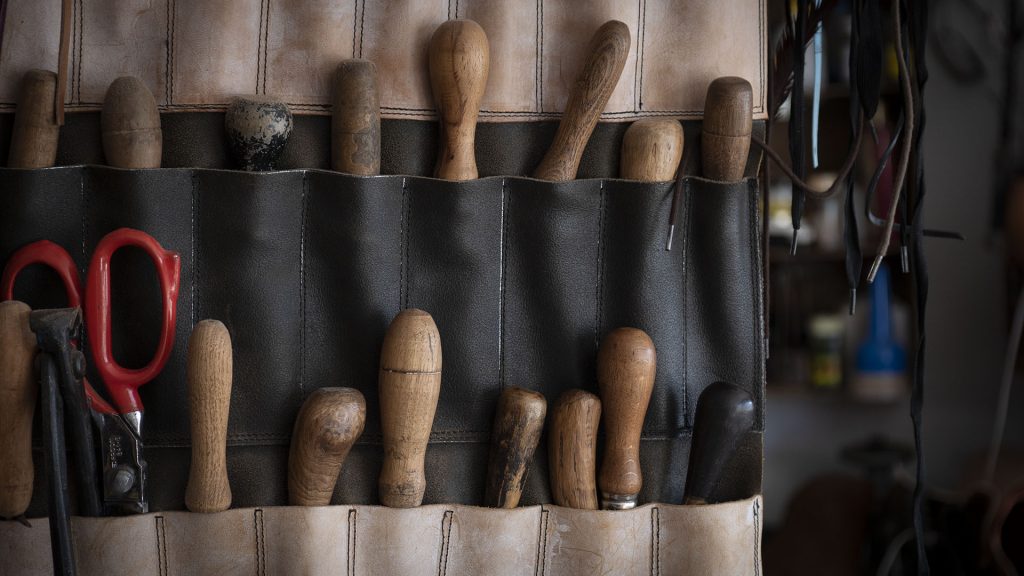
But the years passed and at a certain point of my life, I decided and realized that the things that I had learned when I was a kid, for me now, can help me to create my own projects in an artistic way.
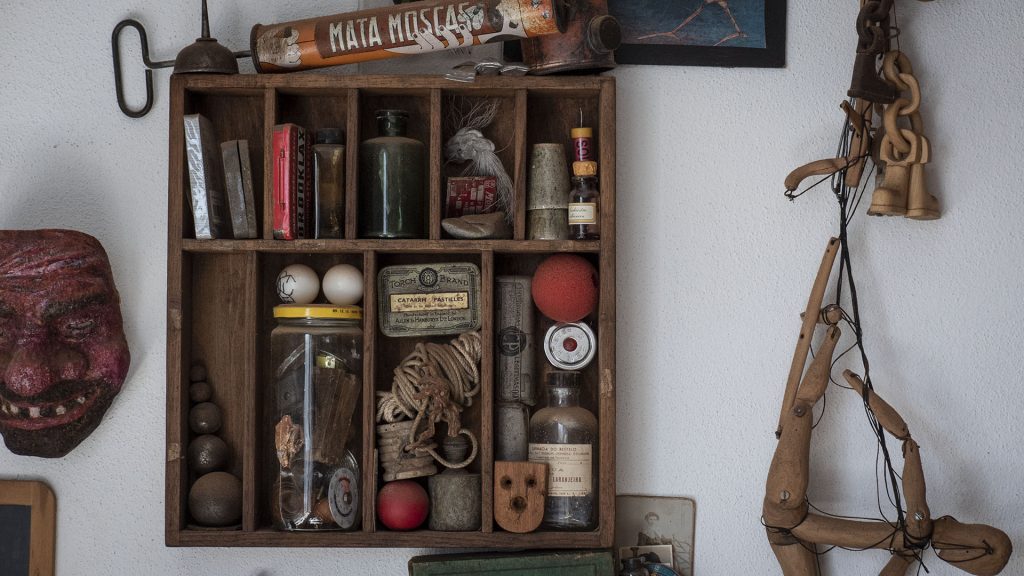
So, I learned a lot of traditional things, I realized I needed to make other questions to myself and for my projects. That question was thinking a bit more in an archeologic way, and to try to understand archeological things about the materials, tools, techniques, the models produced for centuries ago and why.
And bring for my models, techniques,
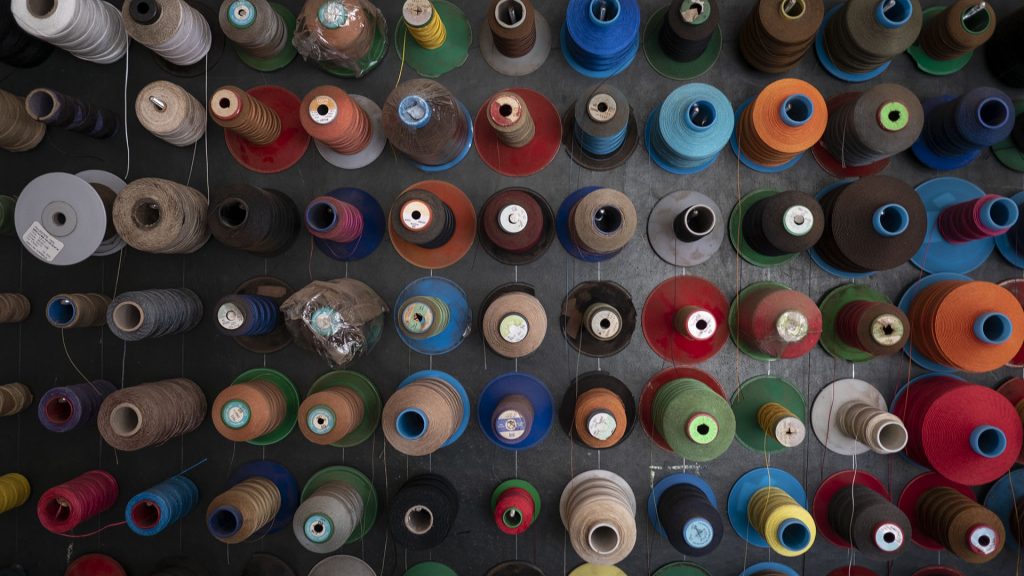
For me, it is important that each part on all pairs are born. They are not just produced, they are born. That idea of the combination of the colors, the reason that I make this model and not the other model.
You see, I try to give the point to what is a Machado? I like to think the people that appreciate my products and my work, are the people that have their feet on the ground and their hearts in the clouds. This is not to be
(Click on pictures to enlarge)
Of course, I think the world is full of shoes. But my shoes are created with other stimulation. I don’t know if stimulation is the right word to say that I feel about it, and I don’t want to pretend to be so a serious artistic shoemaker, but I like the idea that the people put the input that gives you the energy to realize something.
I like the impulse of the poets
I am not a writer or a poet, but I really love poetry. I like the impulse of the poets because they work with some purpose and feel the things in the approach–that I really like and want to put this in my project. This is something I really feel.
TAH: You even made a pair of shoes with poetry on them, right?
JM: Yes, I sometimes use (poetry) and I want to do more in the future—that relation between the words and because words like you know very well, they are amazing.
TAH: It is interesting that you said you are an archeologist in some ways—looking back at the way people were using different textiles. I think you showed me something earlier today I thought was amazing. Can you show me some of the different textiles you use?
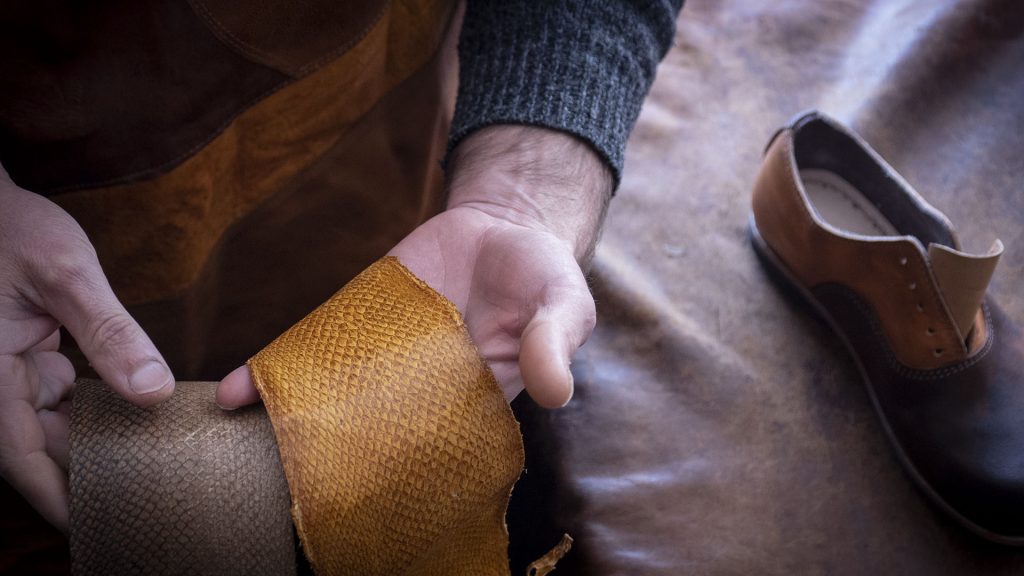
JM: This is salmon. A leather salmon that we can use to produce a lot of things, even parts of a shoe. You can see one approach to use this type of leather.
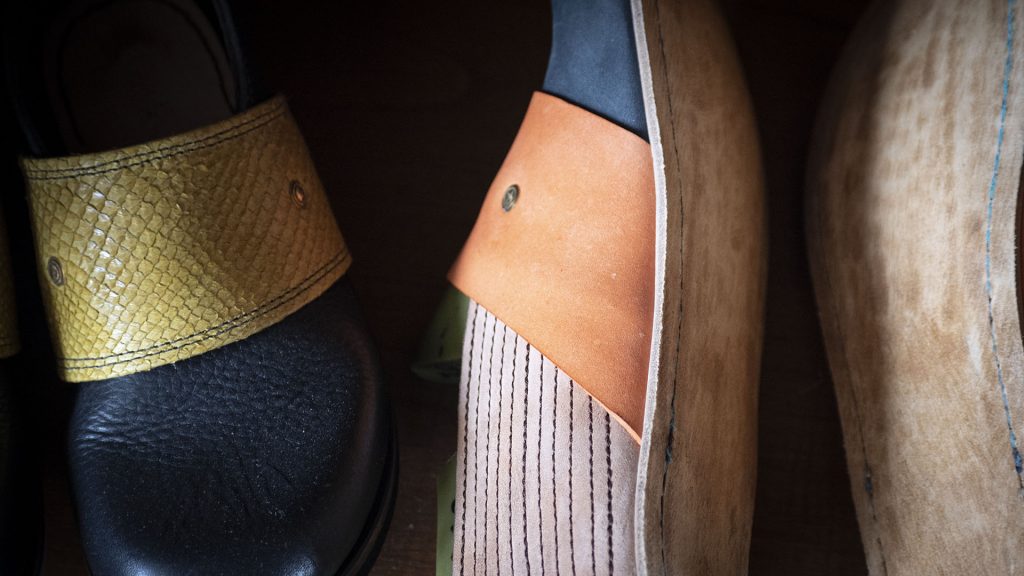
TAH: I just cannot believe it, to me it looks like
How are you getting your leathers? Are you trying to eco
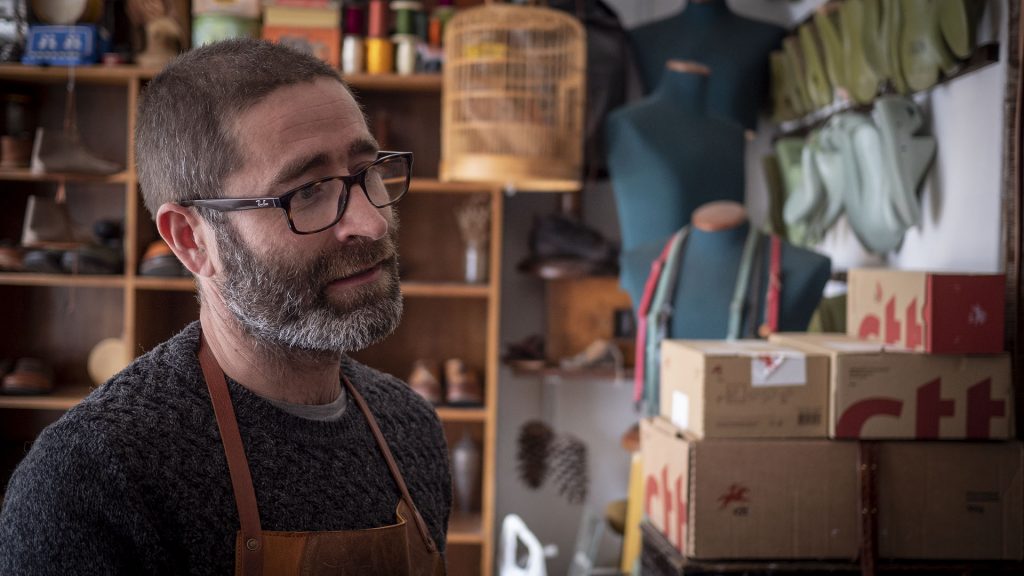
JM: Well it depends. Sometimes, I work with vegetable tannins that are leathers that produced do not have so much impact in the environment. Vegetable tannin, a very old process of produced leather. They use for this leather, oak bark from the trees in the water so that the leather stays in the water for months and
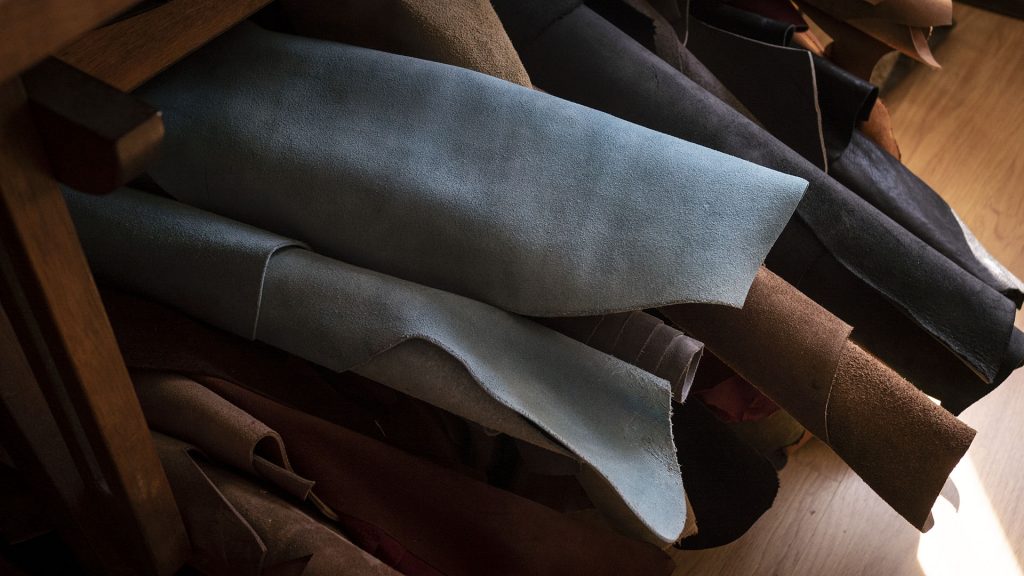
Nowadays, they use the process of chrome (tanning) and it’s a bit more aggressive for the environment. But I use other things, normally I work with some leathers that came from the factories. The waste materials they don’t use anymore so I produce something.
TAH: Ok, so it’s recycled?
JM: Yes, they were going to throw it away, so I use it. When I talk about the ecology—for example, this model I like to say and show they were born.
When I was visiting an exhibition of Gustave Courbet the painter and I saw a painting of “Les
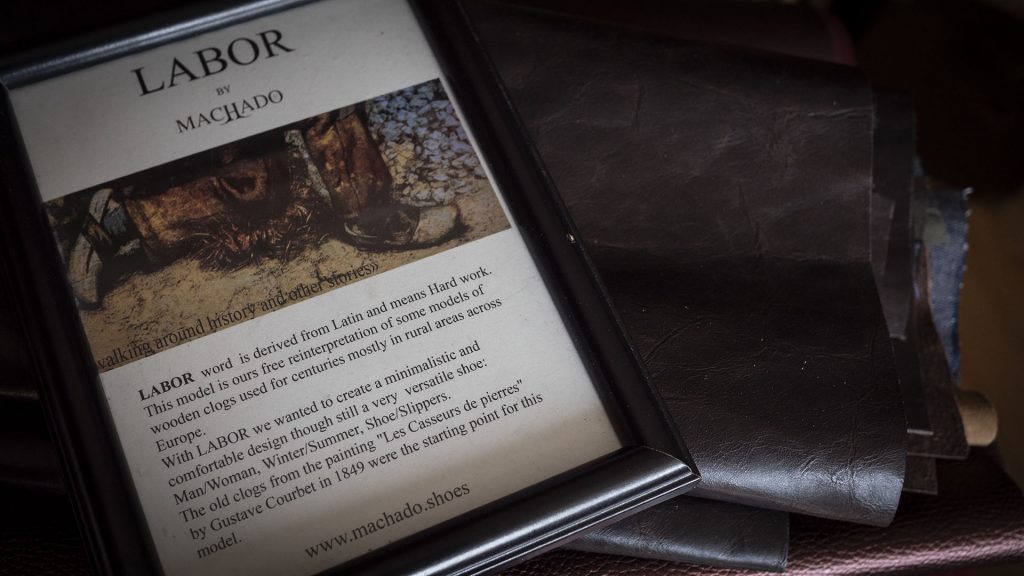
When I saw the detail of these shoes, I thought I want to make my own version. But of course, I don’t want to copy. They are the starting point for me—they give me something. That is something I like to use.
Sometimes as a creative shoemaker or a creative craft designer, sometimes you go and take some influence or feel something when you see something and you say ok that is what I want to produce and that makes sense for me because this form is a very versatile and simple form.
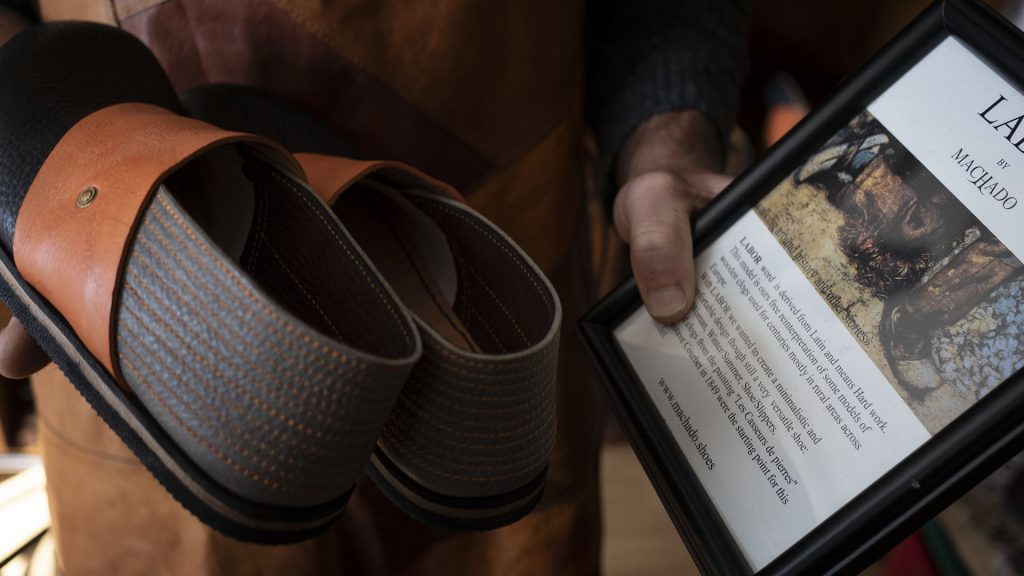
The same model you can make some variation. Because you can produce all the
When you write a poem, you have a will to do it–you feel something. They are born, they are here because I feel and have to produce this kind of combination in particular. That is what I like to put in my work.
TAH: Can you show me some of the new shoes that you made?
JM: This model is a classical model. I call them “Ballermoor” boots they are created for the husband of Queen Victoria in 19th century England—for King Edward.
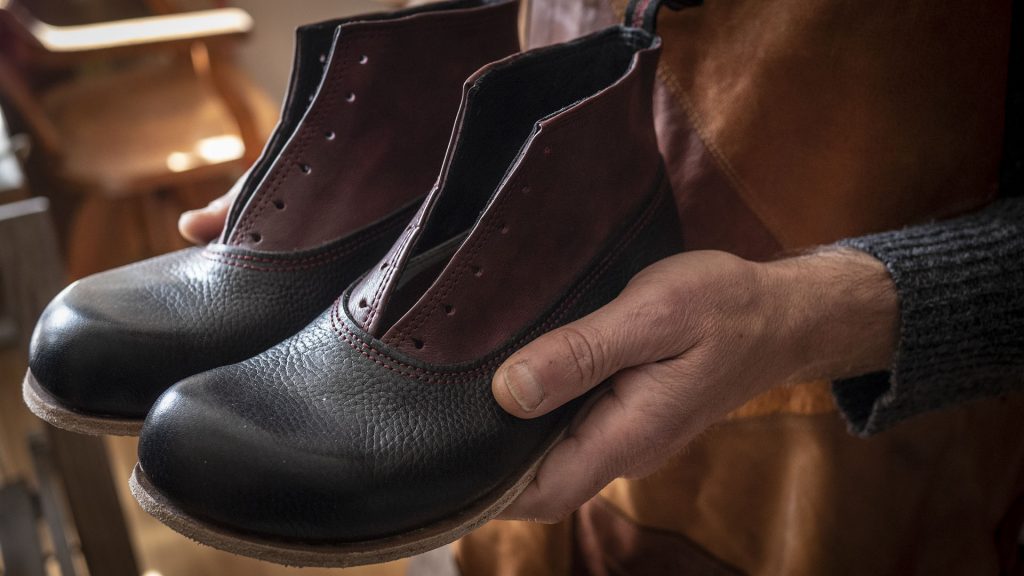
What is a bit different is lasser, the (shoe) mold that I use is a bit different from the normal. See they are
TAH: Yeah I love the clown, I know what you are saying, a little bit more theatrical look.
JM: Even my shoes are a classical shoe for example.
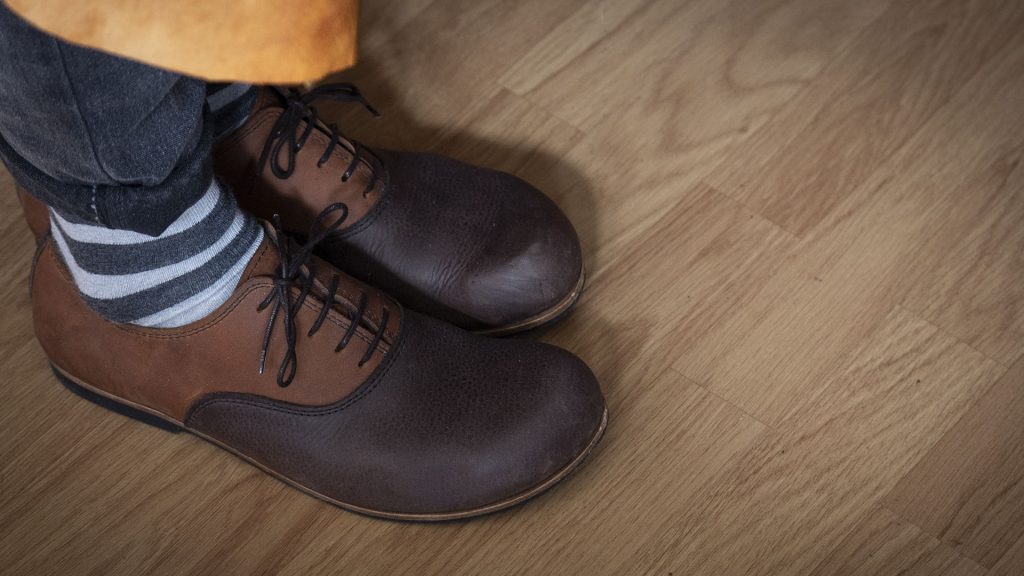
These are worker shoes from the 19th century and these are really nice and again it is the same. My mold destroys something of the classicism.
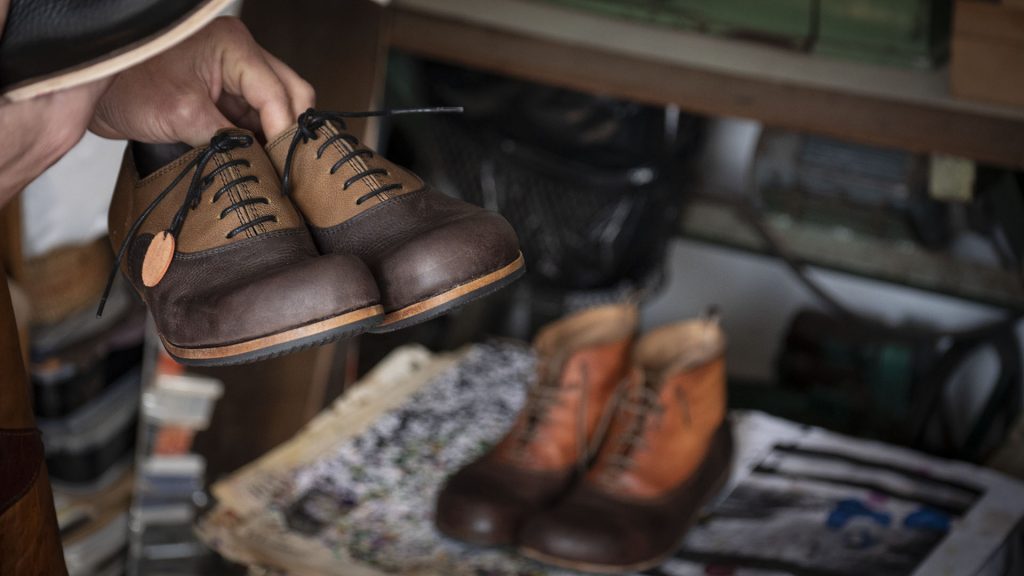
The colors are more or less similar and now you can see, we are talking about the same model but with two different approaches.
This one is very classical—a woman’s boots from
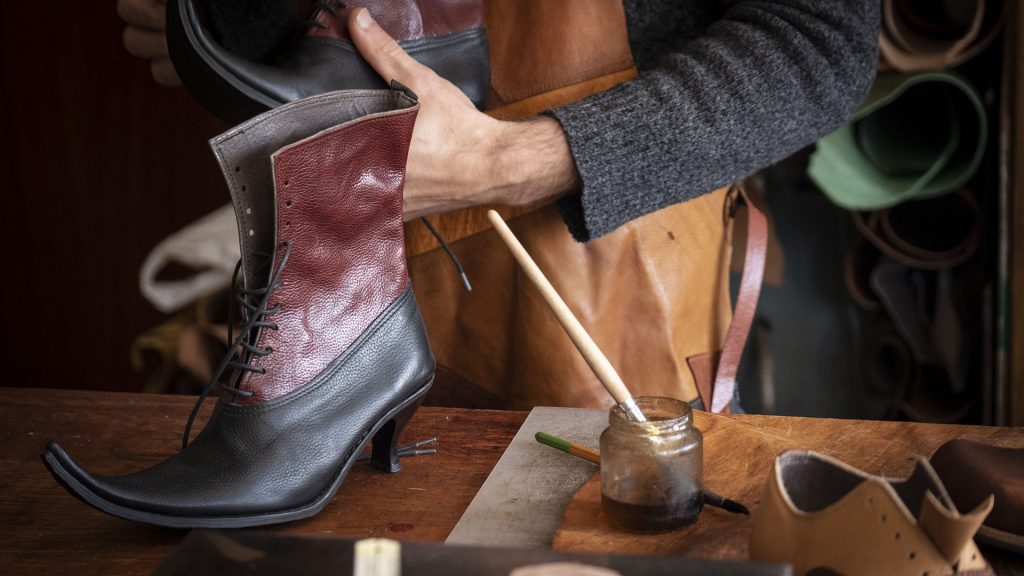
TAH: These (pointy boots) are really big in Mexico.
JM: Yes, they have this kind of boots in Mexico and in Texas as well, but this is a bit more dramatic.
To do this (the shoe tip) I had to create a technique myself. I don’t know that other people all around the world have this kind of technique. I don’t know and I never read
TAH: How long did they take you to make these boots?
JM: I worked on them for a few months. That is why they are not for sale. I never will—well if somebody pays me a lot—when say a lot–a lot. I will make another pair. Otherwise, I will not produce anymore because it is too much work, too many hours to produce something like this.
Human beings created so amazing things
TAH: What do you think is your most influential time period in history?
JM: I like a lot of time periods. Human beings created so amazing things all around the different periods it is difficult to say one period. The Victorian period I really like—the style I like it is very classical, sophisticated, well done and beautiful.
I don’t have it here (in the shop) but I am starting a pair of shoe sandals that came from the Roman period.
TAH: I think you gave me a pair of those with the laces? I love them!
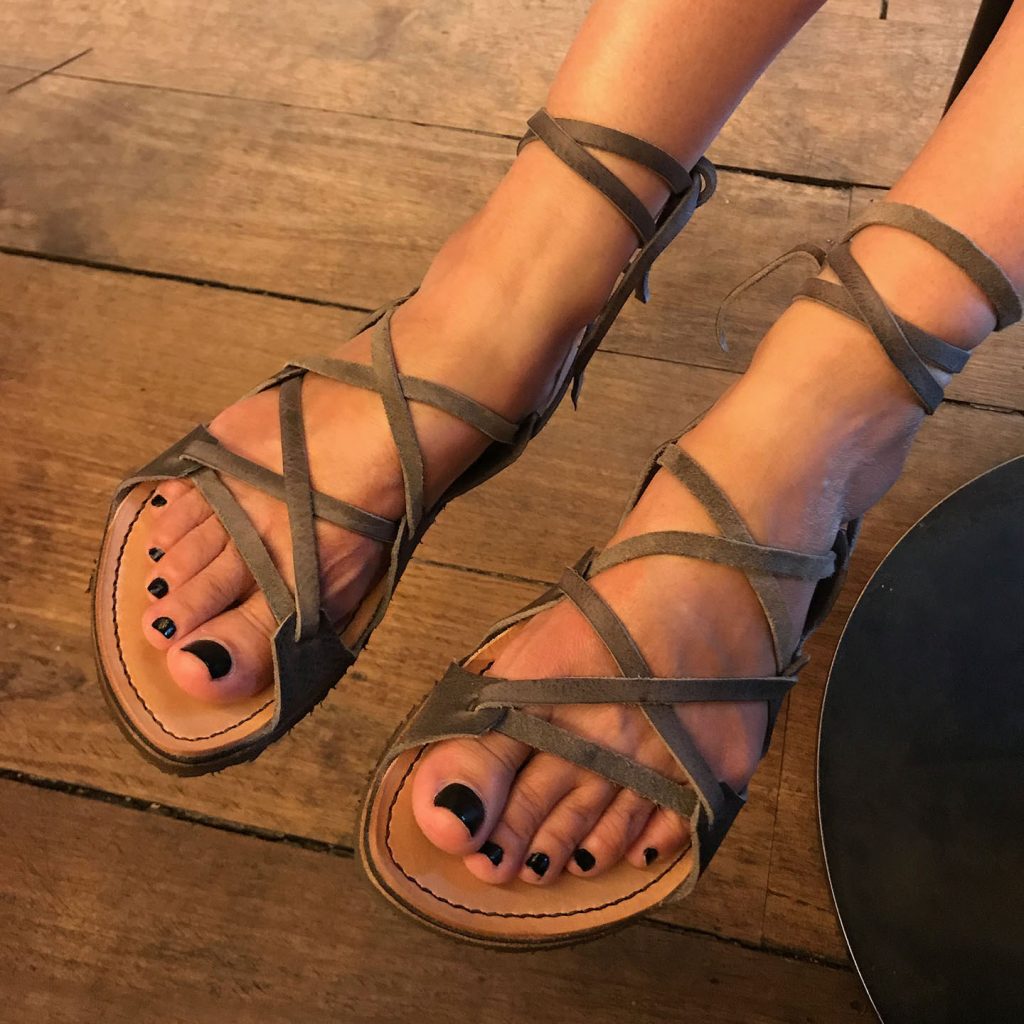
JM: Yes, with the laces. I can show you a boot from the Roman time and these I will produce in the future.
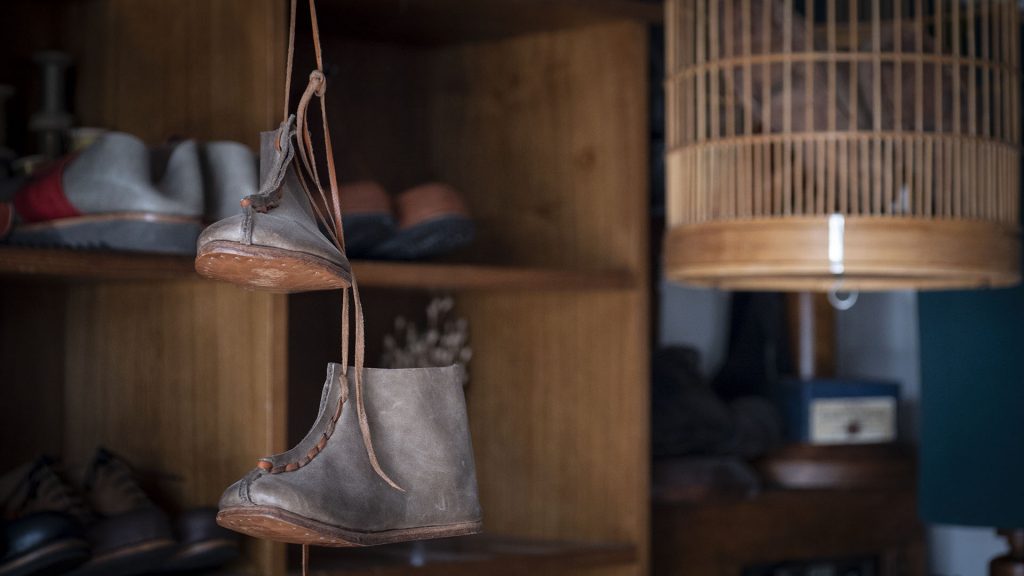
When I made this, you can see the simplicity. They are very beautiful. Sometimes I destroy the idea when I make them, to show in some schools. The kids and even adults think that the people in old Rome just used sandals.
And the guys that built the very important imperium in the world, they didn’t just use sandals. Of course, they used proper boots in the winter. I will produce that with some connection I like, with the colors, put something in the leather, not just a reproduction.
TAH: Would you show us some of your workshop and products?
JM: I also make bags, wallets, belts, camera straps, and suspenders.
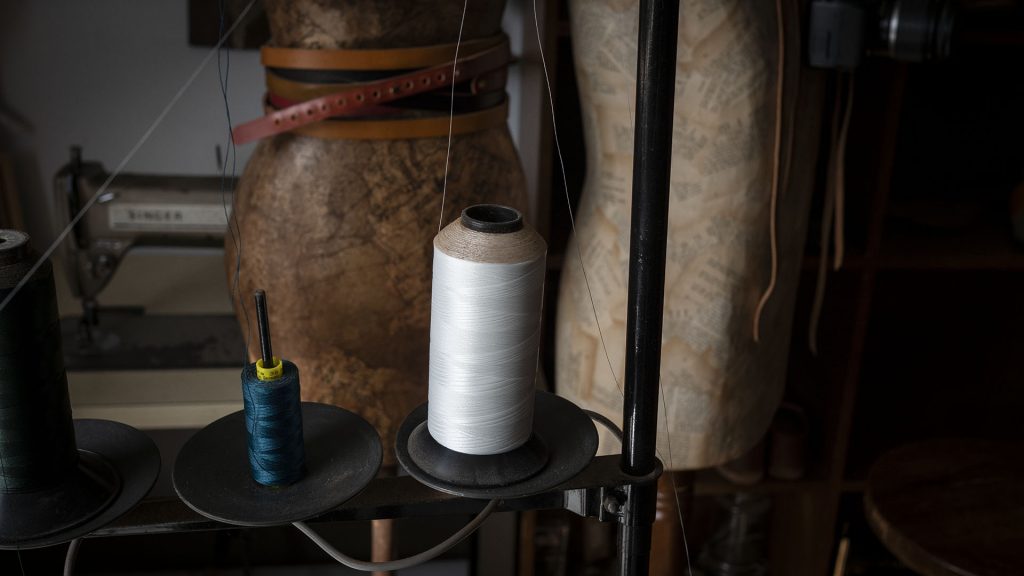
(Click on pictures to enlarge)
TAH: Can you share some of your techniques?
JM: I just need to finish this.

(Jose picks up a shoe and oil brush)
I am using oil for leather, to infiltrate the leather. I like to use this oil because it darkens the leather and brings all of the marks on the leather up and gives me this patina, the material stays dark and gives it a nice touch and to protect as well. I think the shoes look a bit more natural.
TAH: How has your art connected you to other people in the world?
JM: I like to work in my workshop and send my products to different places all around the world. And I appreciate that, and that gives me
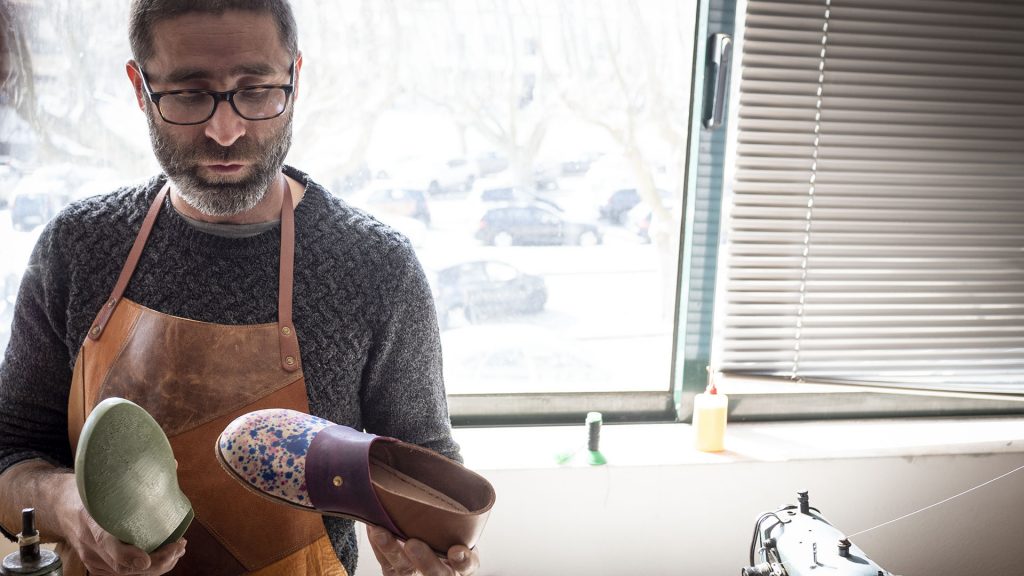
These words define what I really like to do:
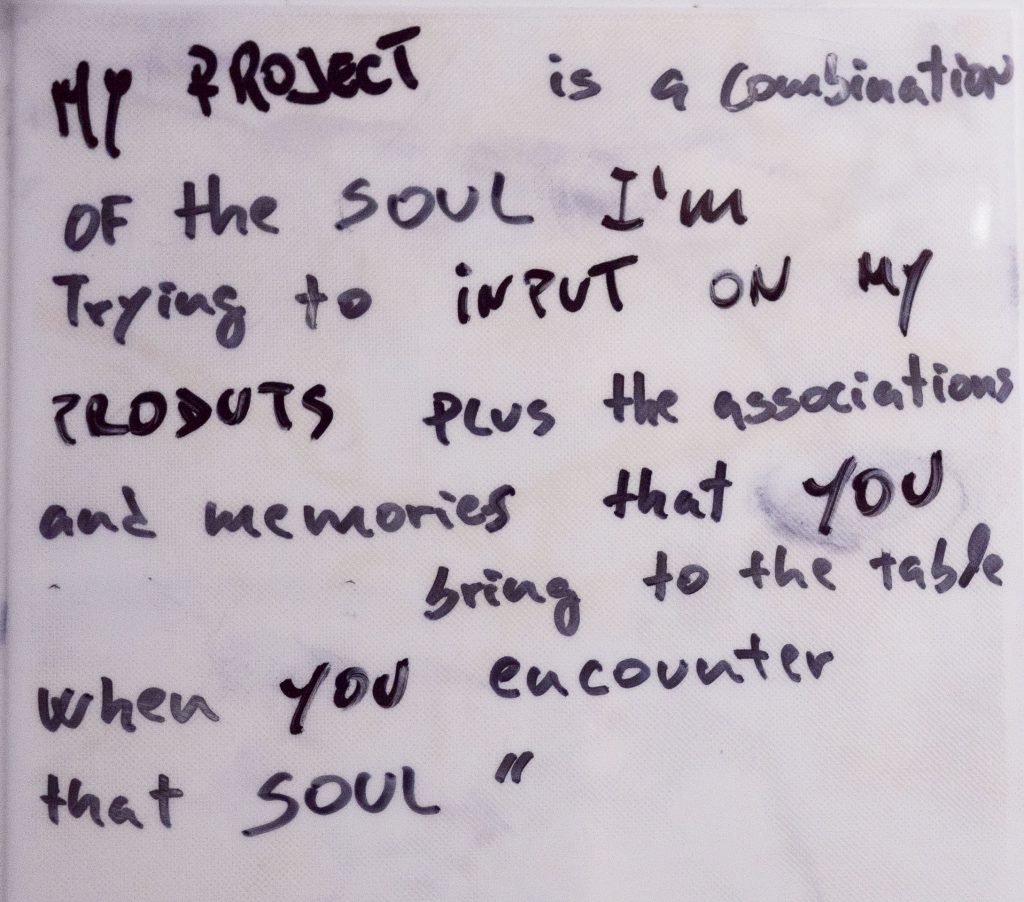
“My project
is a combination of the soul
I’m trying input on my products
Plus, association and memories
that you bring to the table
when you encounter that soul”
– Jose Machado
That is something I like to try to input—this is the point. I know there are sensitive people all around the world that can see the
Because I feel that in the merit of the people, they can see the difference and have a sensibility to the quality and the way they are produced—I think this is something we feel—in the heart. Some products have the way…
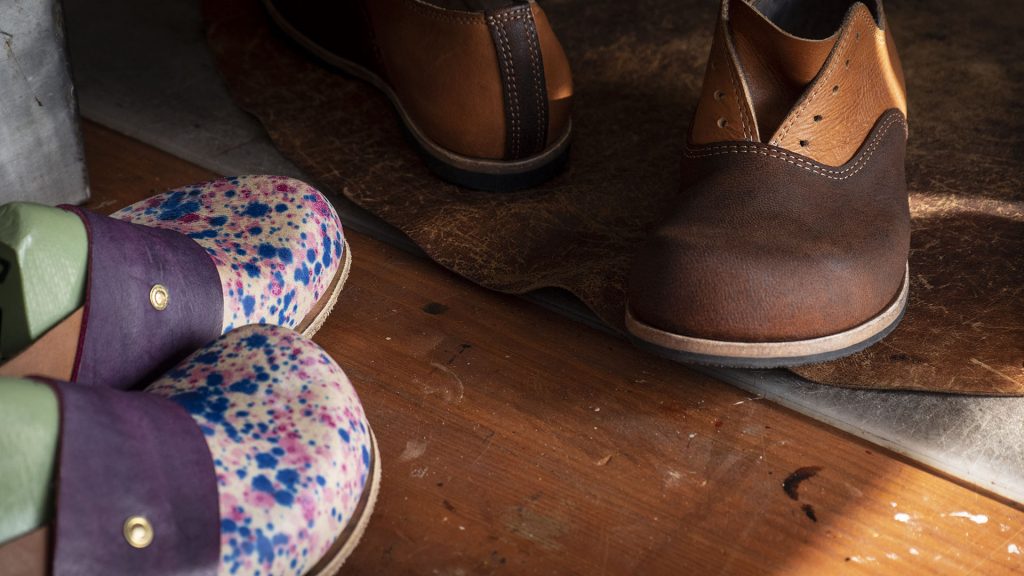
TAH: How do you say when something is made in the heart in Portuguese?
JM: Coração. When we say el de coração, it’s made with passion. I believe when things are made with passion, I think at a certain point some people are recognized.
TAH: Like when you see someone who stands out, you can feel that something–they have that something. It’s almost the same thing but it has transferred into the product?
JM: Yeah, at a certain point I think this makes a difference of the things. I really really really believe that the input you put into your work defines the things.
That is the reason why we feel something when we see one thing and feel something when we see other things. This has to do with creativity and your signature because that is your print. I really believe in this and this is the feeling I want.
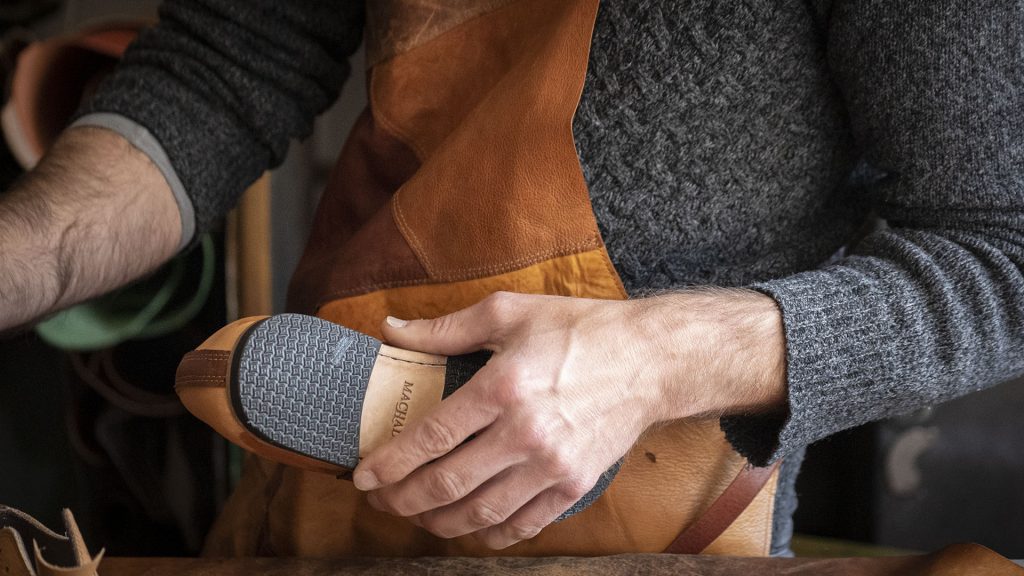
TAH: Do you have any future plans?
JM: Oh, well I always have future plans but they are complicated. Ideals for the future, I would really like to work in other places, go around the World and find other people that work in the same impulse–even other craftsmanship, not necessarily in leather.
art is vital like breathing
for the ones that want to create
And try to create not a community but a net of people that work with the same impulse—that impulse for the creative people is vital. The art is vital like breathing for the ones that want to create. Not just create, create, create. That is what I would like for the future. This is my ideal.
TAH: Do you have any advice for other folks that want to following your creative footsteps?
JM: You have to follow your heart. This vital—I think you have to feel what you really want to do and try to find your signature—not just a copy of a copy.
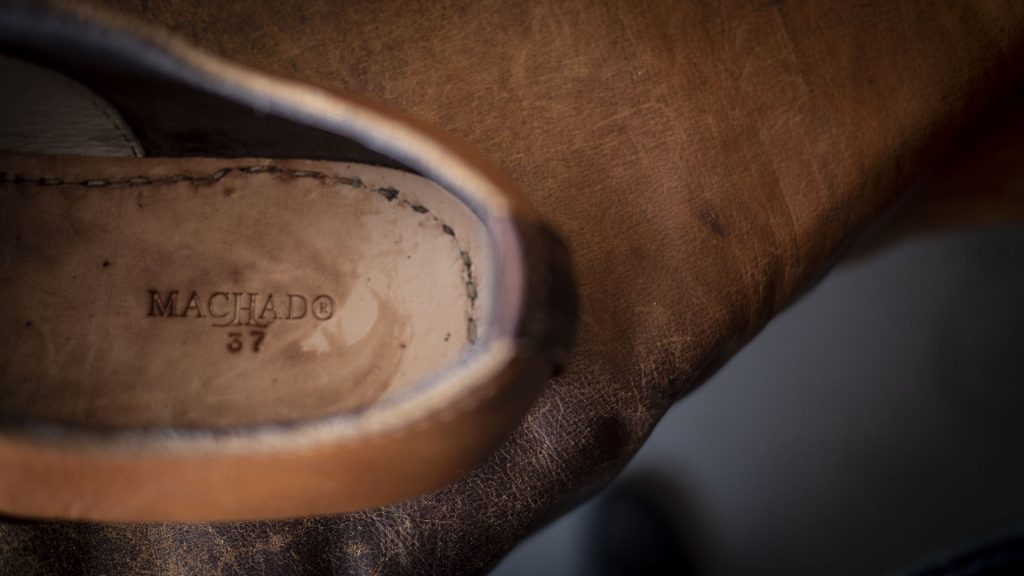
I like the fashion world but I like the idea of individual fashion. Each person has their own style and create communication and make decisions of what they want by something very personal, not just following the mainstream.
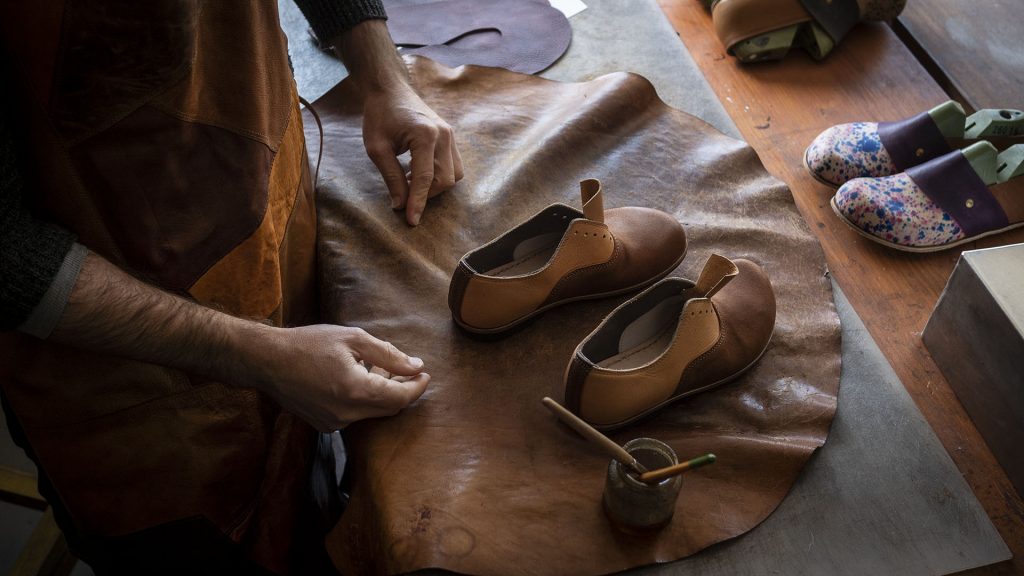
The advice for the people is
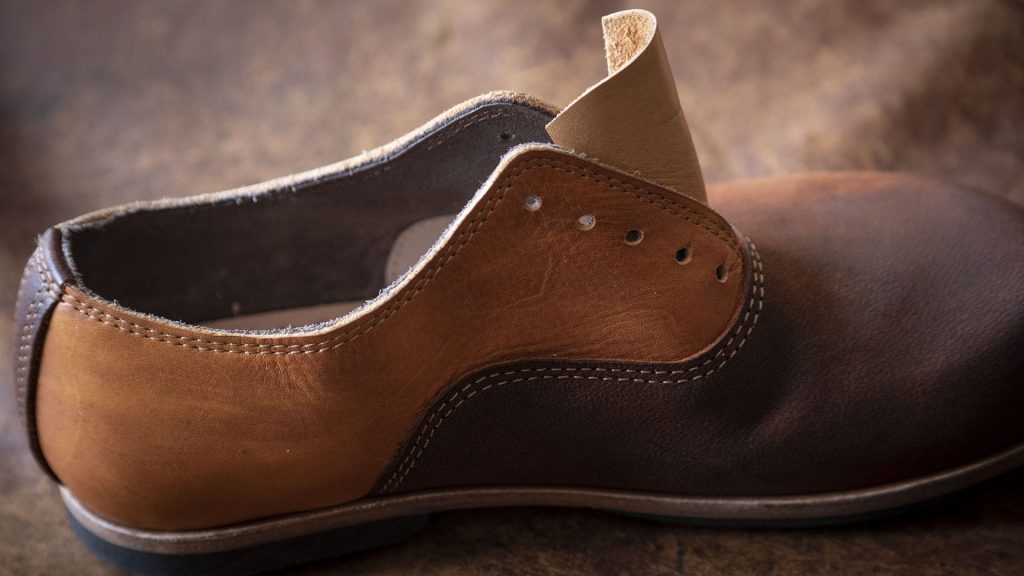
The most import thing I learned from my father was it is important to do it—do it—and learn with your errors. Because the errors are absolutely amazing and we learn a lot with the errors.
There is a play that talks about error, error, and
be ourselves and show that energy that is in inside
And yeah, follow your dreams and follow your heart and try to put out all these kinds of beautiful things that come from the inside of one of us—from our hearts.
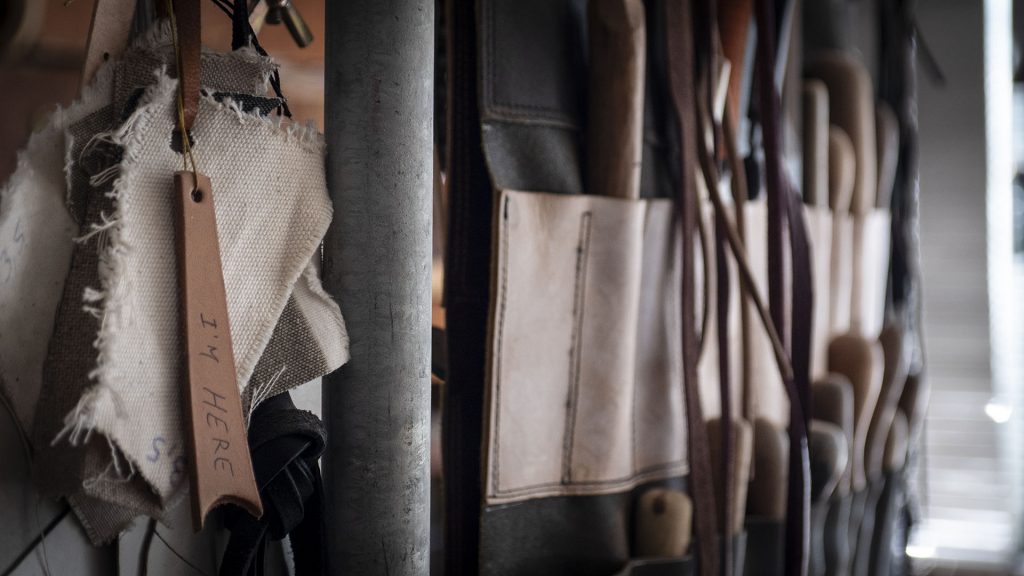
I think all together we can create a much better
That could be really really amazing because we can create such absolutely fantastic things. If you imagine around the world, we are amazing people and can create such beautiful things.
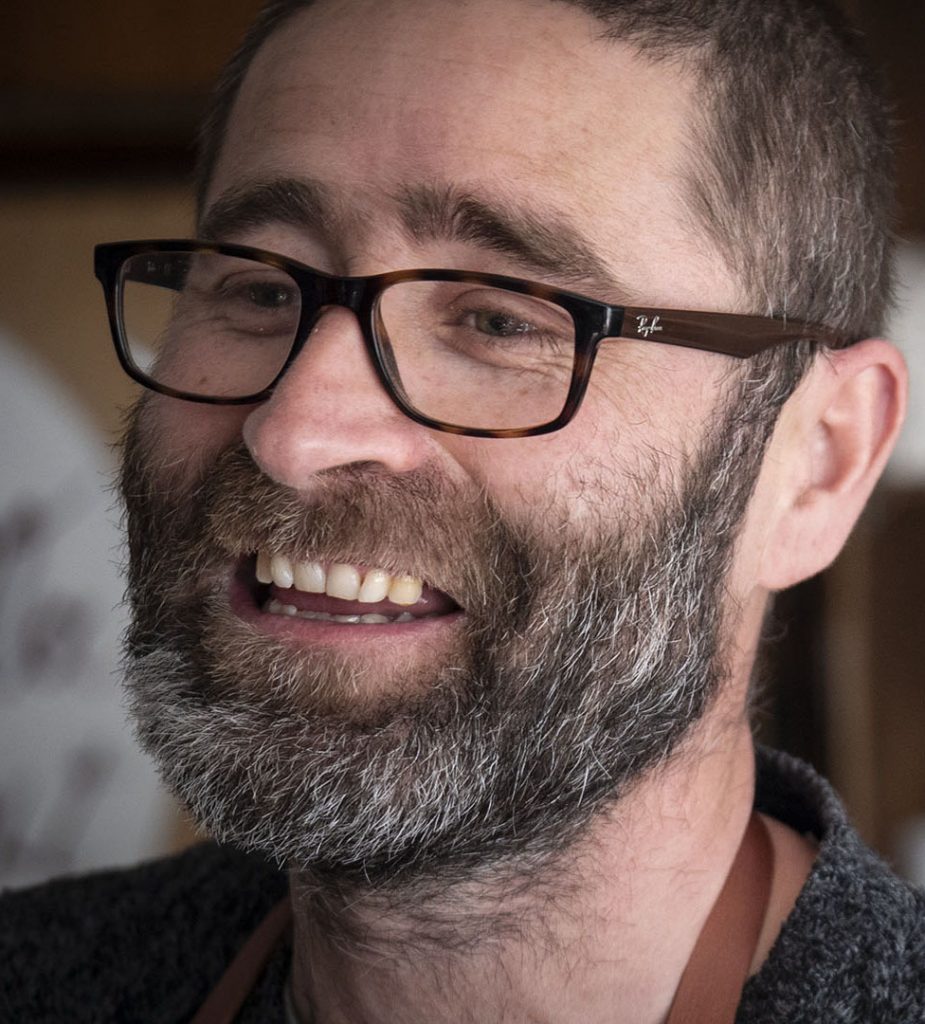
José Machado is a third-generation shoemaker and leather artisan originally from Nazaré and is currently living and working in Vila do Conde, Portugal. He shows and sells his works and wears at many markets, shows, and craft festivals throughout Portugal. If you are ever in Porto on the weekend, please feel free to stop by and see José at either Porto Belo Market and/or Ferreira Borges Market.
You can contact José to purchase products, collaborate, or schedule an in-studio workshop to learn how to design and make shoes and wears.
Email: machadoshoes@gmail.com
Phone: +351 962334701
Website: https://www.machado.shoes
